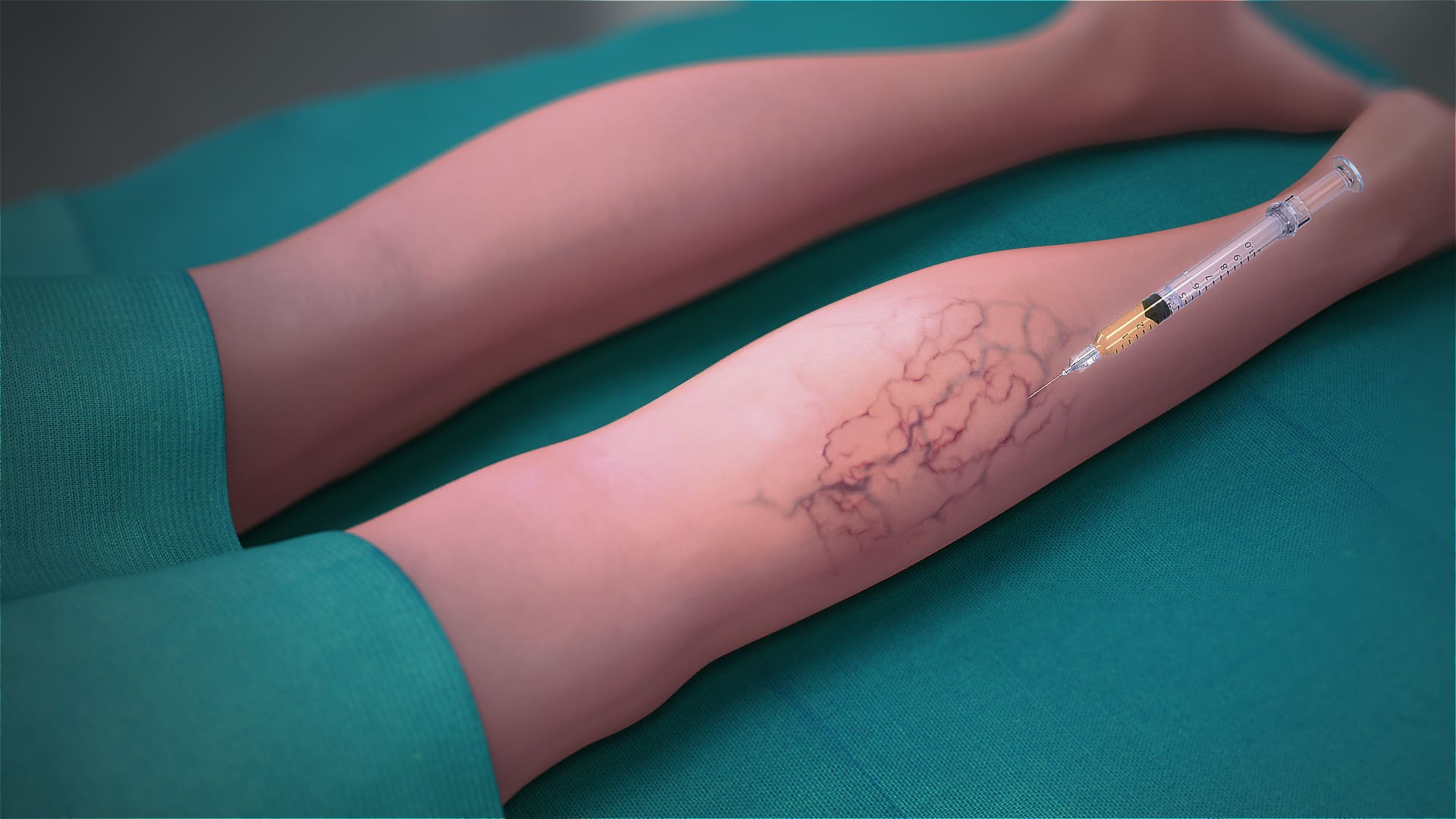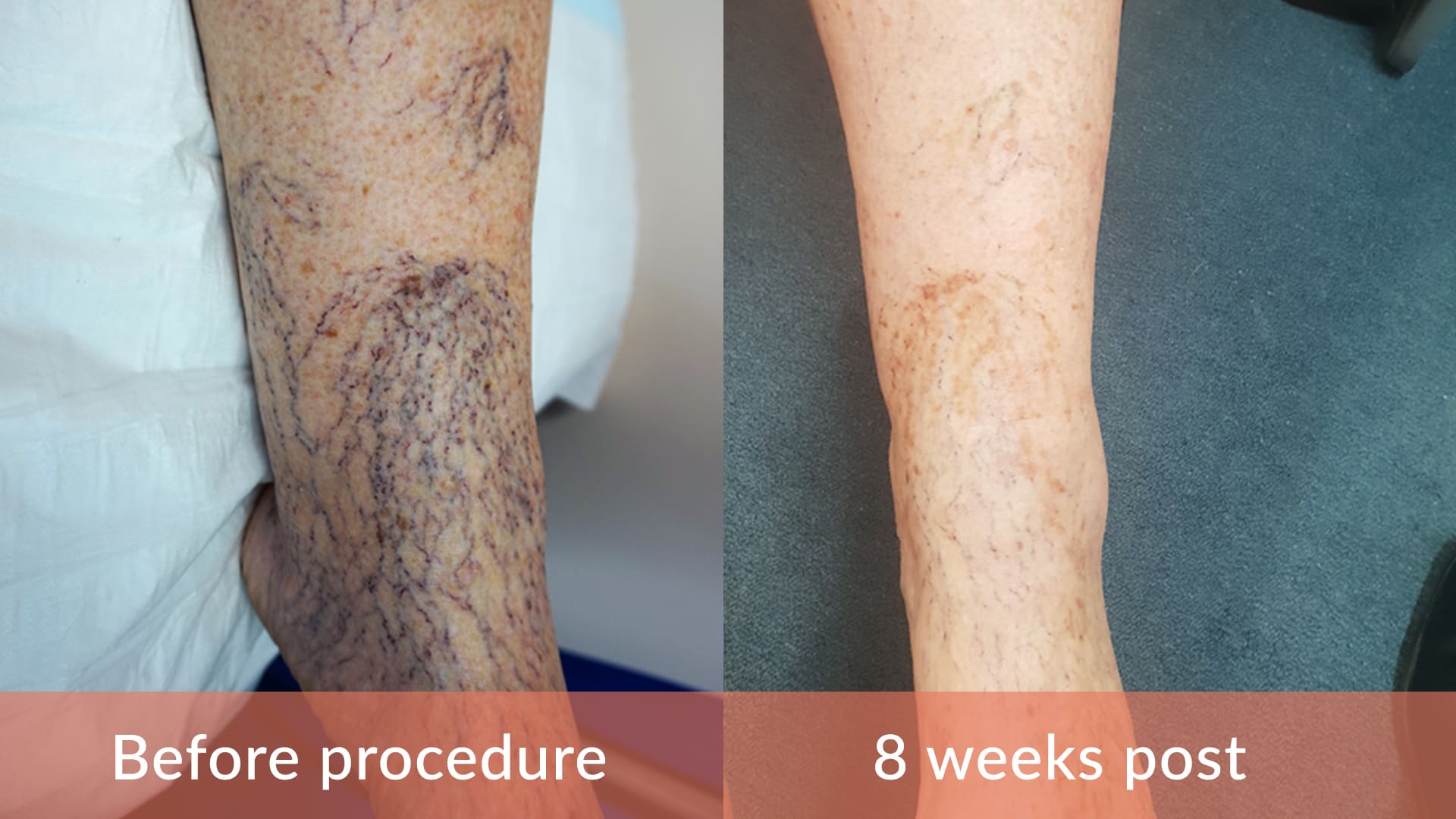Sclerotherapy Procedure
14
Oct
2021
What is Sclerotherapy?
Sclerotherapy is effective in the treatment of varicose veins and spider veins. It is usually considered the treatment of choice for tiny varicose veins.
Sclerotherapy includes administering a solution directly into the vein. The sclerotherapy solution causes the vein to scar, forcing blood to divert through the healthy veins. The collapsed vein is reabsorbed into local tissue and ultimately fades away.
After sclerotherapy, treated veins tend to fade away within a few weeks, although occasionally it might take a month or more to see the complete results. In some examples, several sclerotherapy treatments might be required.

Why it is done
Sclerotherapy procedure is usually done for:
- Cosmetic purposes — to improve the appearance of varicose veins and spider veins
The procedure could also improve associated symptoms such as:
- Aching
- Swelling
- Burning
- Night cramps
If you are pregnant or breastfeeding, doctors recommend waiting to have sclerotherapy done.
Sclerotherapy Risks
Sclerotherapy results in very few severe complications.
Temporary side effects
Some side effects that might happen at the site of the injection include:
- Bruising
- Raised red areas
- Small skin sores
- Dark skin in the form of lines or spots
- Multiple small red blood vessels
These side effects generally go away within a few days to several weeks. However, some side effects could take months or even years to disappear completely.
Side effects that might need treatment
Other complications are less common but might need treatment. These include:
- Inflammation - This is generally mild but might cause swelling, warmth, and discomfort near the injection area. Your doctor might recommend an over-the-counter (OTC) pain reliever like aspirin or ibuprofen (Advil, Motrin IB, others) to lower the inflammation.
- Blood clot - A lump of clotted blood might form in a treated vein that might need drainage. Sometimes, a blood clot might travel to a deeper vein in your leg (deep vein thrombosis).
Deep vein thrombosis (DVT) carries a risk of pulmonary embolism (a very uncommon complication of sclerotherapy), an emergency situation where the clot travels from your leg to your lungs and blocks an important artery. Look for immediate medical care if you experience trouble breathing, chest pain or dizziness, or you cough up blood. - Air bubbles - Small air bubbles might rise in your bloodstream. These do not always cause symptoms, but if they do, symptoms include visual disturbances, headaches, fainting, and nausea. These symptoms usually go away, but contact your doctor if you experience issues with limb movement or sensation after the procedure.
- Allergic reaction – It is possible that you might have an allergic reaction to the solution used for treatment, but this is unusual.

Sclerotherapy Preparation
Before the procedure, your doctor performs a physical examination and gathers your medical history.
Physical examination
Your doctor will:
- Examine the involved veins
- Check for any hidden blood vessel disease
Medical history
Your doctor will ask you to provide your medical history, including asking about any:
- Recent diseases or existing medical conditions, like a heart condition or a past history of blood clots
- Medications or supplements you take, particularly aspirin, ibuprofen (Advil, Motrin IB, others), naproxen sodium (Aleve, Anaprox Ds), blood thinners, iron supplements, or herbal supplements
- Allergies
- Prior treatment for varicose veins and the results of the treatment
If you take aspirin, ibuprofen, naproxen sodium, or blood thinners, your doctor might instruct you on how to prevent taking the medication for a specific amount of time before the procedure, in order to lower the chances of bleeding.
Ultrasound
Depending on which veins are involved, your doctor might request ultrasound imaging on the veins in your legs. Ultrasound is a painless procedure that uses sound waves to produce pictures of structures within the body.
The day before
Before the procedure, circumvent shaving or applying any lotion to your legs. (Also, do not shave or use lotion after the procedure until the injection area is healed.) Wear loose, comfortable clothes to your appointment. You may even consider wearing a pair of shorts so that your legs are exposed.
What you could expect
Sclerotherapy is generally done in your doctor's office and does not need anesthesia. In general, it takes less than one hour to do the procedure.
During the procedure
For the procedure, you will lie down on your back with your legs slightly elevated. After cleansing the region to be treated with alcohol, your doctor will use a fine needle to gradually insert a solution into the appropriate vein.
The solution, generally in liquid form, works by irritating the lining of the vein, causing it to swell shut and obstruct the flow of blood. Some solutions contain a local anesthetic known as lidocaine.
Ultimately, the vein will become scar tissue and disappear. Sometimes a foam version of the solution might be used, especially when a bigger vein is involved. The foam tends to cover more surface regions than liquid.
Some people experience slight stinging or cramps when the syringe is inserted into the vein. If you have a lot of pain, speak to your doctor. Pain might happen if the solution leaks from the vein into the surrounding tissue.
Once the needle is withdrawn, your doctor applies compression and massages the region to keep blood out of the administered vessel and spread the solution. A compression pad might be taped onto the injection region to keep the area compressed while your doctor switches or moves on to the next vein.

The number of injections depends upon the number and size of veins being treated.
After the procedure
You will be able to get up and walk around shortly after your procedure. Walking and moving your legs is crucial to prevent the formation of blood clots!
You will be requested to wear compression stockings or bandages generally for about two weeks to maintain compression on the treated veins.
Most people resume their regular activities on the same day, but it might be wise to have someone drive you home after the procedure. Your doctor will likely advise you to circumvent strenuous exercise for at least two weeks after the procedure.
You will also want to avoid sun exposure to the treated regions during that time. The swelling caused by the injections - combined with sun exposure - could cause dark spots on your skin, particularly if you already have a dark skin tone.
Sclerotherapy Results
If you have been treated for tiny varicose veins or spider veins, you may generally expect to see final results within three to six weeks. Larger veins might need three to four months. For some people, multiple treatments might be required to achieve the results wanted.
Veins that respond to treatment usually do not come back, but new veins might appear.
Your doctor will probably schedule a follow-up visit about a month after your procedure to decide how well the procedure worked and if you require more sessions. Normally, you need to wait about six weeks before going through another sclerotherapy session.

Hill Regional (HRH) Hospital is here to assist all your medical needs with specialists and surgeons trained and experienced in the most advanced treatments. Our highly qualified doctors, nurses, and administrators are dedicated to caring for you with compassion in our state-of-the-art facilities.
Call us on 254-580-8500 to book an appointment with our specialist doctors..